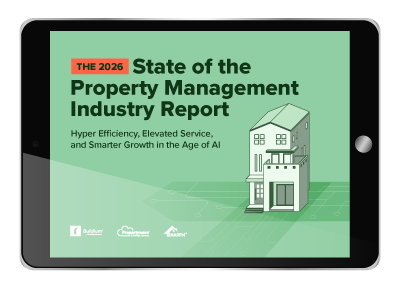As a property manager, you always look for ways to simplify operations and boost your portfolio’s profitability. One investment option that could make this easier is the turnkey property. But what does “turnkey” mean in real estate, and how can it benefit you?
In this blog post, we’ll break down the basics of turnkey properties, explore their key features, and discuss why they might be a great addition to your property management strategy. Whether you’re considering adding turnkey properties to your own portfolio or bringing on new clients with a turnkey approach to their investment, this guide will help you grasp the concept clearly.
What Is a Turnkey Property?
A turnkey property is a real estate investment that’s ready to rent or occupy with minimal effort from the owner or property manager. These properties are fully renovated or newly built and require little to no work to prepare for tenants.
For example, imagine you purchase a single-family home that has been completely renovated and already has tenants living there, generating rental income from day one. This is a turnkey property—a simple investment that requires little involvement in getting it ready. Turnkey properties allow you to grow your portfolio without spending time or money on repairs, renovations, or finding tenants.
Key Characteristics of Turnkey Properties
Turnkey properties stand out for having a few distinct characteristics:
- Fully Renovated or Newly Built: These properties are either newly constructed or have undergone extensive renovations. They are in excellent condition and ready for tenants to move in.
- Tenant-Ready: Turnkey properties may already have tenants in place, allowing for immediate rental income. Alternatively, they may be vacant but ready for tenants to move in without delay.
- Minimal Involvement for Property Managers: These properties require little input from property managers when it comes to maintenance, repairs, or tenant screening.
- Third-Party Management: Many turnkey properties are managed by third-party companies, handling everything from maintenance to tenant management, so you don’t have to manage the day-to-day tasks.
- High-Quality Standards: Turnkey properties often meet high-quality standards, reducing the chances of significant maintenance issues soon after acquisition.
These traits make turnkey properties a good choice for property managers who understand their value and already have third-party property management in mind.
Benefits of Turnkey Properties for Property Managers
Turnkey properties offer several advantages for property managers that can help make managing a portfolio easier and more profitable. Here are the main benefits for owners that can also extend to property managers:
- Less Hands-On Work: With third-party management often in place, property managers can avoid dealing with routine maintenance, repairs, or tenant concerns. This lets you focus on other aspects of your business.
- Instant Cash Flow: Since turnkey properties are ready for tenants, you can begin collecting rent right away, providing a reliable income stream without delay.
- Reduced Maintenance Risks: Turnkey properties are typically newly renovated or constructed, which means fewer issues related to plumbing, electrical, or structural damage in the early stages. This lowers the risk of unexpected expenses.
- Attracting Quality Tenants: A well-maintained turnkey property often attracts high-quality tenants seeking a move-in-ready living space. With fewer initial repairs and no waiting for renovations, tenants are more likely to stay long-term, improving rental income stability.
Overall, turnkey properties offer a more hands-off approach to rental properties and can come with less work for property management companies, which makes them an appealing choice for property managers looking to add new doors.
Potential Drawbacks and Considerations
While turnkey properties offer many advantages, owners and property managers should also be mindful of some potential downsides:
- Higher Initial Costs: Turnkey properties can carry a higher purchase price because of the renovations or new construction. These costs may be higher compared to older or less-improved properties, requiring a larger initial investment.
- Limited Customization: Since turnkey properties are already renovated or built, you may have limited ability to personalize the design or layout to fit specific needs or market demands.
- Reliance on Third-Party Management: While third-party management is often beneficial, it means property managers have less control over day-to-day operations. This can lead to some disconnect between the property manager’s expectations and the management company’s practices.
It’s important to weigh these factors before investing in turnkey properties, as they can influence your return on investment and management approach.
Frequently Asked Questions
What are turnkey properties?
Turnkey properties are either newly built or have undergone extensive renovation. They are ready for tenants to move in immediately, often with third-party management in place to handle day-to-day tasks.
Why should property managers consider turnkey properties?
Turnkey properties allow property managers to start collecting rent right away. These properties often attract quality tenants and reduce maintenance risks because they are in excellent condition.
Are there any drawbacks to investing in turnkey properties?
Turnkey properties can require a higher initial investment due to their renovations or new construction. Furthermore, property managers may have limited control over daily operations if relying on third-party management.
Read more on
